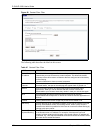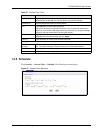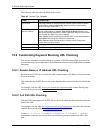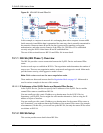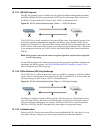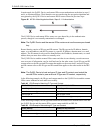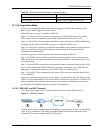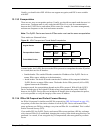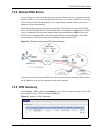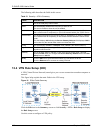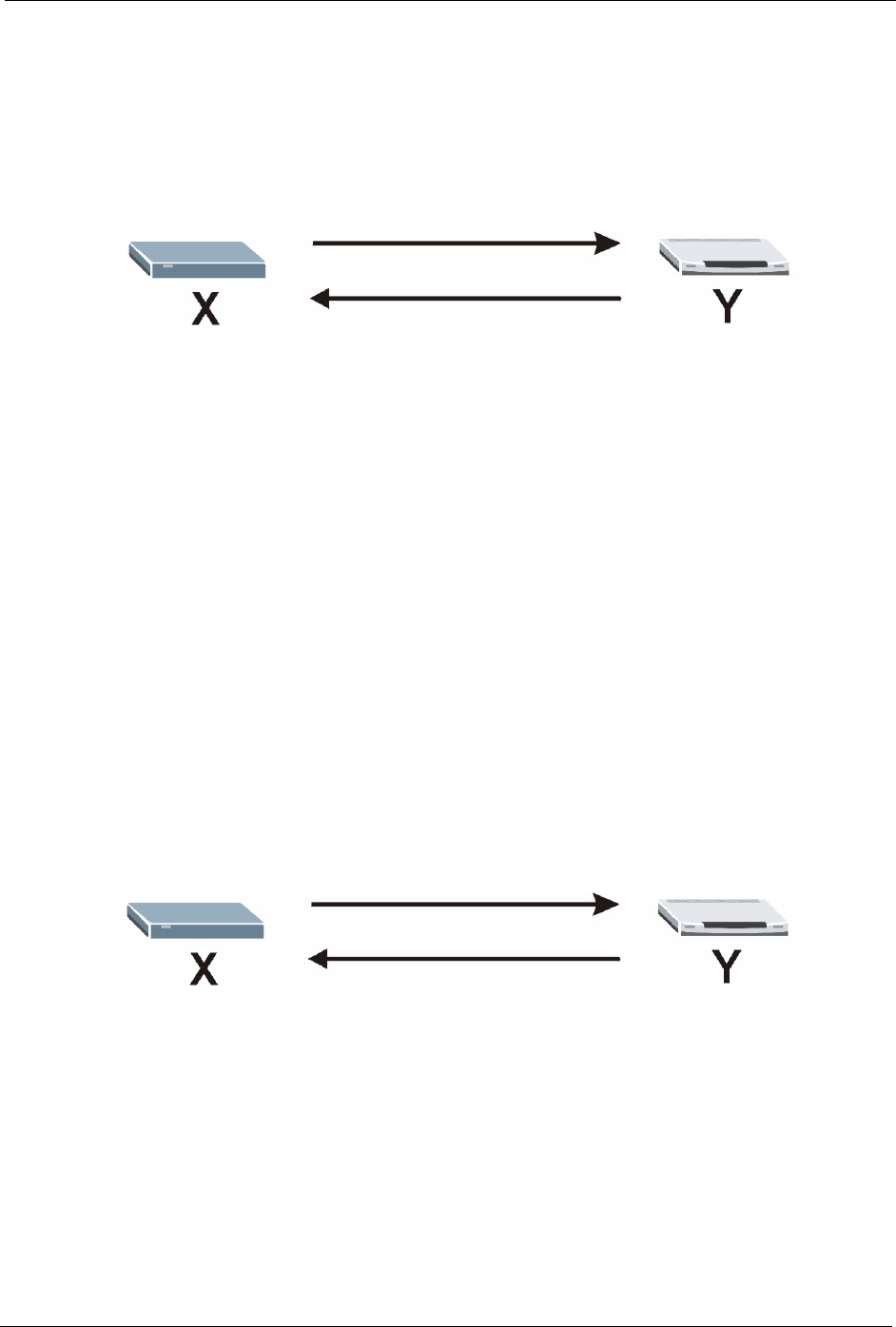
P-334U/P-335U User’s Guide
Chapter 13 IPSec VPN 141
13.1.2.1 IKE SA Proposal
The IKE SA proposal is used to identify the encryption algorithm, authentication algorithm,
and Diffie-Hellman (DH) key group that the ZyXEL Device and remote IPSec router use in
the IKE SA. In main mode, this is done in steps 1 and 2, as illustrated below.
Figure 84 IKE SA: Main Negotiation Mode, Steps 1 - 2: IKE SA Proposal
1
2
The ZyXEL Device sends a proposal to the remote IPSec router. Each proposal consists of an
encryption algorithm, authentication algorithm, and DH key group that the ZyXEL Device
wants to use in the IKE SA. The remote IPSec router sends the accepted proposal back to the
ZyXEL Device. If the remote IPSec router rejects the proposal (for example, if the VPN tunnel
is not configured correctly), the ZyXEL Device and remote IPSec router cannot establish an
IKE SA.
Note: Both routers must use the same encryption algorithm, authentication algorithm,
and DH key group.
See the field descriptions for information about specific encryption algorithms, authentication
algorithms, and DH key groups. See
Diffie-Hellman (DH) Key Exchange on page 141 for
more information about DH key groups.
13.1.2.2 Diffie-Hellman (DH) Key Exchange
The ZyXEL Device and the remote IPSec router use a DH key exchange to establish a shared
secret, which is used to generate encryption keys for IKE SA and IPSec SA. In main mode, the
DH key exchange is done in steps 3 and 4, as illustrated below.
Figure 85 IKE SA: Main Negotiation Mode, Steps 3 - 4: DH Key Exchange
3
4
The DH key exchange is based on DH key groups. Each key group is a fixed number of bits
long. The longer the key, the more secure the encryption keys, but also the longer it takes to
encrypt and decrypt information. For example, DH2 keys (1024 bits) are more secure than
DH1 keys (768 bits), but DH2 encryption keys take longer to encrypt and decrypt.
13.1.2.3 Authentication
Before the ZyXEL Device and remote IPSec router establish an IKE SA, they have to verify
each other’s identity. This process is based on pre-shared keys and router identities.




